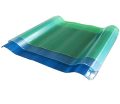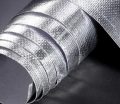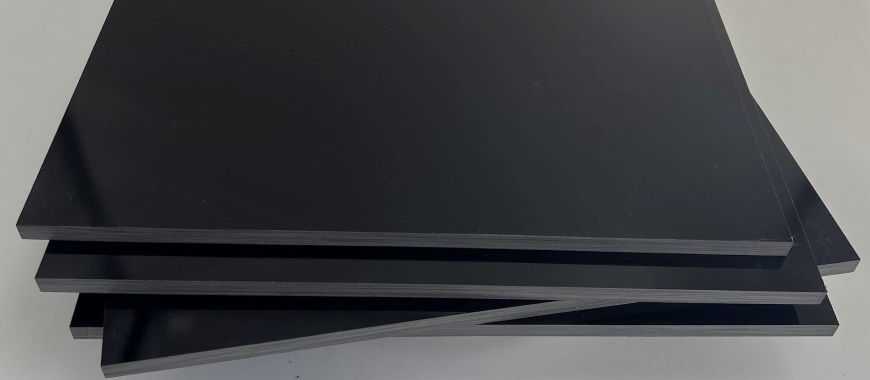
When seeking a fiberglass sheet alternative, one effective option is using alternatives to fiberglass cloth. These materials, such as carbon fiber and aramid fibers, provide impressive strength and durability while being significantly lighter. Carbon fiber, for instance, is known for its high tensile strength, making it ideal for applications requiring lightweight yet robust solutions. Aramid fibers, like Kevlar, offer excellent impact resistance, enhancing safety in protective gear. Additionally, natural fibers, such as hemp or jute, are becoming popular for their eco-friendliness and sustainability. For those exploring fiberglass sheet alternatives, reviewing fiberglass sheet samples can provide valuable insights into how these materials compare in terms of strength, weight, and overall performance. These alternatives not only serve various projects but also contribute to reduced environmental impact, making them an appealing choice for more sustainable options. Polycarbonate sheets, muslin with resin, or paper strips with glue are durable and cost-effective fiberglass sheet alternatives.
The Types of Fiberglass Sheet Alternative
FR4 Laminated Fiberglass
FR4 laminated fiberglass is a composite material made from woven fiberglass cloth and epoxy resin. This combination creates a rigid, durable product that is highly resistant to heat and electrical insulation. FR4 is often used in electronics, particularly for circuit boards, where its electrical insulating properties are critical. In construction, FR4 laminated fiberglass finds applications in areas requiring lightweight yet strong materials, such as in the production of electrical enclosures and as structural components in various assemblies.
The characteristics of FR4 laminated fiberglass make it an attractive choice for electronic applications. Its high dielectric strength allows it to effectively insulate electrical components, preventing short circuits and ensuring safety in devices. Additionally, its thermal stability makes it suitable for environments with fluctuating temperatures, as it maintains its structural integrity under heat.
FR4 laminated fiberglass is an effective fiberglass sheet alternative, combining long glass fiber reinforcement with epoxy resin. This material is particularly valued in the electronics industry for its excellent electrical insulation properties, commonly used in the production of printed circuit boards (PCBs).
The primary benefit of FR4 laminated fiberglass lies in its ability to withstand high temperatures while maintaining structural integrity under electrical stress. It is lightweight and exhibits good mechanical strength, making it suitable for a wide range of applications.
Despite its advantages, FR4 laminated fiberglass has some limitations. Its chemical resistance is relatively lower compared to other materials, and prolonged exposure to harsh chemicals can lead to degradation. Additionally, manufacturing FR4 requires specialized equipment and expertise, which can pose challenges for some manufacturers.
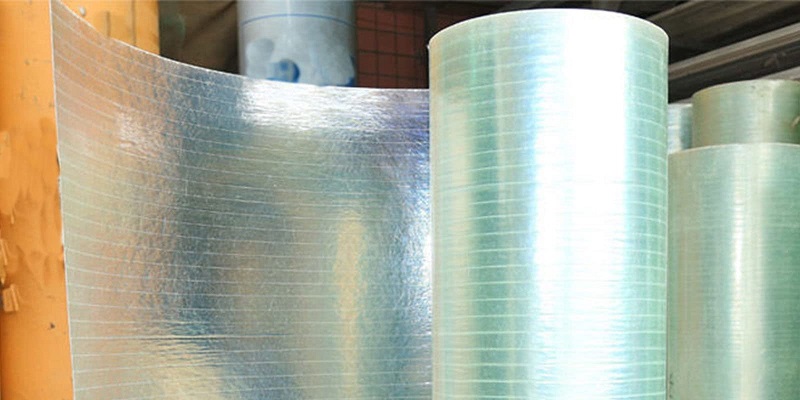
Advantages of Using FR4 Laminated Fiberglass
One significant advantage of using FR4 laminated fiberglass is its excellent mechanical properties. It possesses high tensile strength, enabling it to withstand heavy loads and resist deformation. This makes it suitable for applications in environments where mechanical stresses are prevalent, such as in industrial machinery or structural support.
Another key benefit is its lightweight nature. Compared to traditional materials such as metal, FR4 laminated fiberglass is much lighter, allowing for easier handling and installation. This property is particularly valuable in industries where weight savings can lead to improved performance and efficiency.
FR4 laminated fiberglass also offers outstanding thermal resistance. It can operate effectively in high-temperature environments without losing its properties, which is crucial in applications like circuit boards that generate heat during operation. This thermal stability ensures that devices remain functional and reliable, enhancing overall performance.
Applications of FR4 Laminated Fiberglass
The applications of FR4 laminated fiberglass are diverse and widespread. In the electronics sector, it is primarily used for manufacturing printed circuit boards (PCBs). The material’s dielectric properties are crucial for ensuring that electrical signals can pass through without interference. FR4 is used in a variety of electronic devices, from consumer electronics to industrial machinery, highlighting its versatility.
In construction, FR4 laminated fiberglass is used to create electrical enclosures that protect sensitive components from environmental factors. These enclosures provide a robust barrier against moisture, dust, and chemicals, ensuring the safety and reliability of electrical systems. Additionally, FR4 can be utilized in flooring systems, particularly in areas where electrical insulation is needed.
Another notable application is in the automotive industry, where FR4 laminated fiberglass is used in electrical connectors and components. The material’s ability to withstand high temperatures and resist chemicals makes it ideal for use in vehicles, where it contributes to both safety and performance.
Fiberglass Resin as a Fiberglass Sheet Alternative
Fiberglass resin serves as a fundamental component in the production of fiberglass products, acting as the adhesive that binds hollow glass fibers together. This resin typically consists of thermosetting polymers, like epoxy or polyester, which cure into a solid form when mixed with a catalyst. The resulting composite material is known for its excellent strength and durability, making it suitable for a wide range of applications, including automotive and marine industries.
The advantages of fiberglass resin as a fiberglass sheet alternative are numerous. It provides high tensile strength, allowing manufacturers to create lightweight yet robust components. Additionally, fiberglass resin exhibits excellent resistance to moisture, chemicals, and UV radiation, which is particularly beneficial for outdoor applications. This makes it a versatile choice for various projects requiring resilience and longevity.
However, fiberglass resin does have some drawbacks. The curing process can release volatile organic compounds (VOCs), necessitating proper ventilation during use to ensure safety. Furthermore, while it offers good impact resistance, fiberglass resin may lack the flexibility of other alternatives, potentially limiting its application in certain areas.
Carbon Fiber as a Fiberglass Sheet Alternative
Carbon fiber is another prominent fiberglass sheet alternative known for its exceptional strength-to-weight ratio. Composed of thin strands of carbon atoms bonded in a crystal structure, carbon fiber is a lightweight and rigid material widely used in industries such as aerospace and automotive.
The key advantages of carbon fiber sheets include outstanding stiffness and high tensile strength, making them ideal for applications where minimizing weight is crucial. Unlike fiberglass, carbon fiber has low thermal expansion, ensuring that components maintain their shape and performance under varying temperature conditions, a critical factor in aerospace applications.
However, carbon fiber sheets tend to be more expensive than traditional fiberglass options, which may be a consideration for budget-conscious projects. Additionally, the production process for carbon fiber can be complex and time-consuming, potentially leading to longer lead times.
Acrylic Sheet
Acrylic sheets are lightweight, waterproof, and highly durable, making them a versatile alternative to fiberglass sheets. They have a smooth, glossy surface and are resistant to cracking, scratching, and mold. Acrylic is commonly used as a decorative wall covering, shower surround, or even in DIY projects where transparency or aesthetics are essential. Unlike fiberglass, acrylic does not require additional finishing, making it easy to install and maintain.
Mineral Wool
Mineral wool is an excellent insulation material made from molten rock or slag. It is naturally fire-resistant, mold-proof, and provides superior thermal and acoustic insulation compared to fiberglass. Mineral wool is denser, making it harder to cut and shape, but its high durability and resistance to water intrusion make it ideal for industrial and residential applications.
Cellulose Insulation
Cellulose insulation is an eco-friendly option made from recycled paper products, such as newsprint, treated with fire retardants for safety. It is cost-effective and provides excellent thermal and sound insulation, making it a good choice for attics, walls, and crawl spaces. While cellulose is not as rigid as fiberglass sheets, its environmental benefits and affordability make it a popular alternative.
Soy-Based, Wool, Hemp, and Recycled Denim Insulation
These eco-friendly alternatives provide insulation with minimal environmental impact.
- Soy-based insulation is created using renewable soy oils, offering excellent thermal resistance.
- Wool insulation is a natural and breathable option that resists moisture and mold growth.
- Hemp insulation is highly sustainable, offering good thermal and sound insulation while being biodegradable.
- Recycled denim insulation repurposes old denim materials, creating a soft, non-toxic insulation option ideal for DIY projects.
Each of these alternatives addresses specific needs, whether it’s enhanced durability, fire resistance, or sustainability, making them valuable substitutes for fiberglass sheets. Choose based on your project’s requirements and environmental considerations.
Other Alternatives to Fiberglass Sheets
Beyond FR4 laminated fiberglass, several other materials can serve as alternatives to traditional fiberglass sheets. Another alternative is polyethylene terephthalate (PET), a thermoplastic polymer that offers good chemical resistance and thermal stability. PET is used in a variety of applications, including packaging and electrical insulation. Its lightweight nature and ease of fabrication make it a suitable option for certain projects.
Aramid fiber, commonly known by the brand name Kevlar, is another alternative material. It is renowned for its high tensile strength and resistance to impact and abrasion. This makes aramid fiber suitable for applications in protective gear and certain automotive components, where durability and safety are critical.
Fiberglass sheet scraps can also be repurposed in some of these applications, benefiting from advances in recycling technologies.
DIY Alternatives as Fiberglass Sheet Alternative Options
DIY fiberglass sheets aiternatives are gaining traction for those seeking cost-effective solutions. Commonly used materials include landscape fabric and cardboard, which can be easily sourced and adapted for various applications.
Landscape fabric offers a lightweight and flexible option for projects like garden beds or temporary structures. While it may provide some level of weather resistance, it may not match the durability of traditional fiberglass sheets or their alternatives.
Cardboard can also be utilized in creative projects, from prototypes to crafts. While easy to work with, cardboard is not suitable for structural applications due to its limited load-bearing capacity and susceptibility to moisture.
Exploring the Temp Rating for Fiberglass Sheets and Insulation
Reasons to Consider a Fiberglass Sheet Alternative
Fiberglass sheets, also known as FRP (Fiber Reinforced Plastic), are widely used for their versatility and durability. However, they also come with limitations that lead users to explore fiberglass sheet alternatives. Below, we detail the advantages and disadvantages of fiberglass sheets and explain why alternatives may be necessary.
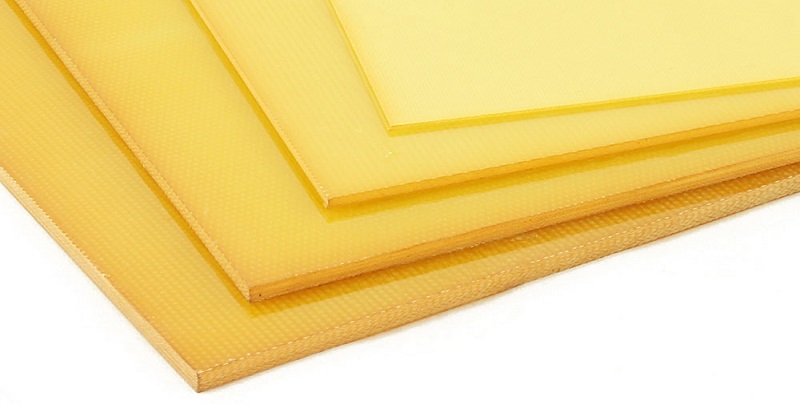
Advantages of Fiberglass Sheets
- Lifespan
Fiberglass sheets are highly durable and can last for decades, typically 20-30 years, making them a reliable choice for long-term applications. - Lightweight
FRP materials are lightweight, easy to transport, and simple to install. Their low weight reduces the risk of damage to walls or supporting structures. - Corrosion Resistance
Fiberglass sheets resist chemical corrosion, making them suitable for environments exposed to moisture, chemicals, or salt, such as industrial or marine settings.
Disadvantages of Fiberglass Sheets
- Limited Cleaning Options
While FRP is chemically resistant, many harsh cleaners can still damage or weaken the material. This restricts cleaning to mild solutions like soap and water, which may not suffice in heavily soiled or industrial environments. - Poor High-Temperature Resistance
Fiberglass sheets degrade significantly when exposed to high temperatures, losing strength and reliability over time. This makes them unsuitable for applications requiring high heat resistance. - Difficulty in Recycling
Due to their manufacturing process, many fiberglass sheets are difficult or impossible to recycle, contributing to environmental concerns.
Reasons to Consider a Fiberglass Sheet Alternative
- Sustainability
With increasing awareness of environmental impact, many users prefer eco-friendly alternatives such as recycled materials, biodegradable sheets, or natural fiber-based options like hemp or cellulose. - Improved Temperature Tolerance
For applications involving exposure to high heat, materials like mineral wool or ceramic-based sheets are more suitable than fiberglass. - Ease of Maintenance
Alternatives like acrylic or polycarbonate sheets can be cleaned with a wider range of solutions, making them more practical for environments requiring stringent hygiene standards. - Enhanced Durability
In environments where fiberglass sheets are prone to wear and tear, stronger materials like polycarbonate offer better long-term performance.
By weighing the pros and cons of fiberglass sheets and assessing project-specific needs, users can determine whether a fiberglass sheet alternative is a more practical, sustainable, and efficient choice.
Shop High-Quality Fiberglass Tubing Near Me Today
Polycarbonate Sheets as a Fiberglass Sheet Alternative
Polycarbonate sheets serve as another fiberglass sheet alternative, providing excellent impact resistance and optical clarity. This material is commonly used in applications requiring transparency and durability, such as safety glasses and protective barriers.
The advantages of polycarbonate sheets include their ability to withstand significant stress without breaking and their lightweight nature, which simplifies handling and installation. They can also be treated for UV resistance, enhancing their longevity in outdoor applications.
However, polycarbonate sheets can scratch more easily than fiberglass sheets, limiting their use in high-traffic areas. While they offer good thermal insulation, their performance in extreme conditions may not match that of fiberglass materials.
Natural Fiber Composites as Fiberglass Sheet Alternative Materials
Natural fiber composites represent an emerging fiberglass sheet alternative, using renewable materials like hemp and jute. These materials are recognized for their environmental benefits and potential for sustainable manufacturing.
Natural fiber composites are biodegradable and offer a lower carbon footprint compared to traditional fiberglass sheets. They provide good mechanical properties, including reasonable tensile strength, suitable for applications in automotive and construction.
However, variability in performance due to differences in fiber quality can be a challenge. Additionally, while these composites offer numerous benefits, the availability of natural fibers may fluctuate, impacting production scalability.
Applications and Future Trends of Fiberglass Sheet Alternatives
The applications for fiberglass sheet alternatives continue to grow as industries seek innovative materials. Ongoing research is focused on enhancing properties and reducing production costs, indicating a promising future for these materials.
In construction, the demand for lightweight and sustainable materials is driving interest in composites that provide structural integrity. The automotive industry is also exploring fiberglass sheet alternatives to enhance fuel efficiency while maintaining safety standards.
Fiberglass sheet alternatives offer diverse options for manufacturers and consumers, meeting various needs across industries. The continued development of these materials is likely to improve performance while ensuring sustainability and cost-effectiveness in the long term.
Key Fiberglass Sheet Uses for Enhanced Insulation
Key Considerations When Choosing a Fiberglass Sheet Alternative
When selecting a fiberglass sheet alternative, it is essential to evaluate various factors to ensure the material meets your project’s requirements.
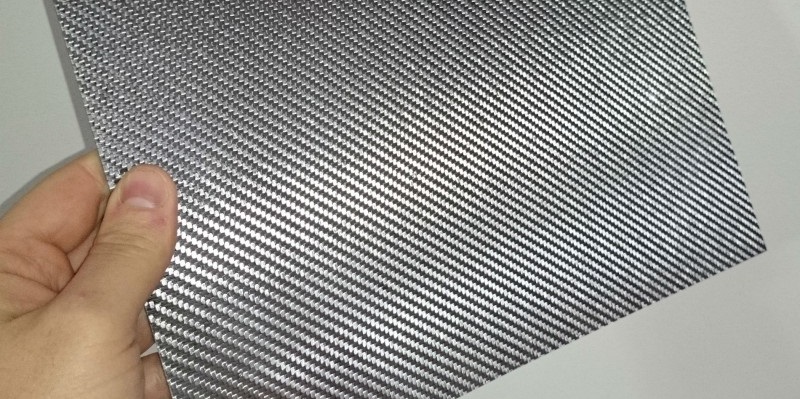
Below are the detailed aspects to consider:
Strength and Stiffness
Evaluate the required strength and stiffness for your application. For load-bearing structures or high-impact environments, materials like polycarbonate or reinforced acrylic sheets may provide the necessary durability. Flexible alternatives like canvas or muslin reinforced with resin may suffice for non-structural purposes.
Chemical Resistance
If the material will be exposed to harsh chemicals, consider options like polycarbonate or acrylic sheets, which have higher resistance to chemical corrosion compared to natural fiber alternatives like cellulose or wool. Research the compatibility of the material with the specific chemicals it will encounter.
Temperature Tolerance
Determine the operating temperature range. Fiberglass alternatives like mineral wool or ceramic-based sheets perform well in high-temperature environments, whereas materials like acrylic and cellulose may degrade when exposed to extreme heat.
Moisture Resistance
Consider the exposure to water or humidity. Waterproof materials like acrylic sheets or mineral wool are excellent in environments prone to moisture, as they resist mold and mildew. Alternatives like recycled denim or hemp require treatment for moisture resistance if used in damp conditions.
Environmental Impact
Eco-conscious users may prioritize materials with a lower environmental footprint. Soy-based insulation, hemp, recycled denim, and cellulose are biodegradable and made from renewable or recycled resources, making them excellent choices for sustainable projects.
Ease of Handling and Installation
For DIY projects or quick installations, lightweight and easy-to-cut materials like acrylic sheets, muslin with resin, or cellulose insulation are ideal. Mineral wool and polycarbonate may require special tools or professional installation due to their density and rigidity.
Cost and Availability
While some alternatives like carbon fiber cobalt SS may offer superior performance, they can also come at a higher price point. Balancing performance requirements with budget constraints is essential for making an informed decision.
Aesthetic Appeal
For decorative purposes, materials like acrylic sheets provide optical clarity and a sleek finish, while muslin and canvas can be painted or textured to suit design preferences.
Fire Resistance
In applications where fire resistance is critical, mineral wool or ceramic-based materials are excellent choices. Avoid materials like untreated muslin or cellulose, as they are flammable without additional treatment.
Long-Term Durability
Consider the lifespan of the material in the intended environment. Polycarbonate and mineral wool offer superior longevity in harsh conditions, while natural fiber-based alternatives may degrade faster if not properly maintained.
By addressing these factors, you can make an informed decision when selecting the most suitable fiberglass sheet alternative for your project, balancing performance, cost, and sustainability.
FAQs about Fiberglass Sheet Alternative
Yes, there are several alternatives to fiberglass, depending on the application. One common alternative is carbon fiber, known for its high strength-to-weight ratio and stiffness, making it ideal for aerospace and high-performance automotive applications. Another alternative is aramid fibers, like Kevlar, which offer excellent tensile strength and are often used in protective gear. Natural fibers, such as hemp or flax, are also gaining popularity due to their sustainability and lower environmental impact. Each alternative has unique properties, so it’s essential to consider the specific requirements of your project before making a choice.
Instead of fiberglass mesh, you can use materials like polyester mesh, which provides similar reinforcement properties and is often used in construction and repairs. Metal mesh is another option, offering superior strength and durability, particularly in applications requiring added protection. For lightweight projects, nylon mesh can be effective, providing flexibility and ease of handling. Additionally, you might consider using carbon fiber mesh for high-performance applications, as it combines strength with low weight. Choosing the right mesh will depend on the specific demands of your project, including load-bearing requirements and environmental conditions.
The suitability of a material compared to fiberglass largely depends on the specific application. Carbon fiber is often considered superior in terms of strength and weight, making it ideal for high-performance applications such as racing and aerospace. In environments where impact resistance is critical, aramid fibers like Kevlar provide enhanced durability. For applications focused on sustainability, natural fibers, such as jute or hemp, offer an eco-friendly alternative with decent mechanical properties. However, fiberglass remains a cost-effective solution for many applications, balancing performance with affordability, so the “better” material should be assessed based on project requirements.
“Poor man’s fiberglass” refers to an alternative method of reinforcing materials using canvas fabric and waterproof glue, such as Titebond or epoxy. This technique mimics the durability and water resistance of traditional fiberglass at a fraction of the cost. Commonly used for DIY projects like boat repairs, camper restorations, or lightweight construction, poor man’s fiberglass is applied by saturating the canvas in glue and layering it over the desired surface. Once cured, it forms a tough, durable coating that resists water and minor impacts. While it doesn’t offer the same structural strength or heat resistance as traditional fiberglass, it’s an eco-friendly and inexpensive option for non-load-bearing applications. It’s a practical choice for projects where cost and simplicity outweigh the need for high performance.
Several materials can resemble fiberglass, including carbon fiber, Kevlar, and certain plastics like polycarbonate or acrylic. Each has a similar lightweight, fiber-reinforced appearance but differs in properties and applications. Carbon fiber, for instance, is stronger and more rigid than fiberglass but far more expensive, often used in aerospace or automotive industries. Kevlar, known for its impact resistance, is common in bulletproof vests and high-strength composites. Additionally, fiberglass insulation can be mistaken for mineral wool or asbestos-based insulation due to its similar texture. Misidentifying materials can lead to safety concerns, particularly if asbestos is involved. To differentiate, check the material’s weight, flexibility, and intended application, or consult a professional. These alternatives are often used where fiberglass’s thermal or structural properties aren’t ideal, making them viable substitutes depending on the project’s requirements.
Instead of fiberglass tape, you can use alternatives like polyester tape, carbon fiber tape, or duct tape, depending on the project. Polyester tape offers flexibility and water resistance, making it suitable for lightweight or temporary reinforcements. Carbon fiber tape provides superior strength and rigidity for demanding structural applications, albeit at a higher cost. For simpler tasks, heavy-duty duct tape can serve as a quick, cost-effective solution, though it lacks durability and heat resistance. Another option is aluminum foil tape, ideal for heat-resistant sealing tasks in HVAC or electrical work. For eco-friendly choices, jute or hemp fabric coated with resin can replicate fiberglass tape’s reinforcing properties. Select the alternative based on factors like load requirements, environmental exposure, and budget. While substitutes can work for specific needs, traditional fiberglass tape remains the best option for high-strength, permanent reinforcements.
Fiberglass can pose health and environmental concerns if mishandled. During installation or repair, fiberglass particles can become airborne, irritating the skin, eyes, and respiratory system. Prolonged exposure to these particles may lead to chronic respiratory issues, although it’s not considered a carcinogen like asbestos. Environmentally, fiberglass is not biodegradable, contributing to waste accumulation in landfills. Manufacturing fiberglass also consumes significant energy and produces emissions. In certain situations, fiberglass can degrade under prolonged UV exposure, releasing harmful particles. While its strength, corrosion resistance, and thermal properties make it a valuable material, alternatives like natural fibers or biodegradable composites are gaining traction as eco-friendlier options. Proper handling, protective equipment, and disposal methods can mitigate fiberglass’s negative effects, but users should weigh these concerns against the material’s performance benefits.
Breathing in fiberglass particles can irritate the respiratory system, causing coughing, sore throat, or difficulty breathing. Fiberglass fibers are tiny, and when inhaled, they can lodge in the lungs or throat. Short-term exposure usually results in temporary discomfort, but prolonged exposure could lead to more severe respiratory conditions such as bronchitis. Fiberglass is not classified as a carcinogen, unlike asbestos, but repeated exposure may cause long-term irritation or scarring in the lungs. To minimize risks, always wear a properly fitted respirator or mask when working with fiberglass and ensure adequate ventilation. If exposure occurs, seek fresh air immediately and rinse nasal passages with water. Inhaling fiberglass is avoidable with proper precautions, and using alternatives like mineral wool or biodegradable insulation materials can eliminate this risk altogether.
Fiberglass is relatively affordable compared to advanced composites like carbon fiber or Kevlar. Its cost-effectiveness, combined with strength, corrosion resistance, and thermal insulation properties, makes it a popular choice in construction, automotive, and marine industries. However, it can be more expensive than natural materials like wood or metal in certain applications. The cost of fiberglass varies based on the type (e.g., sheets, mats, or resin-infused composites) and the quantity needed for a project. While the initial material cost is low, expenses may increase due to specialized handling, safety equipment, and disposal requirements. Alternatives like “poor man’s fiberglass” (canvas and glue) or recycled materials may provide cheaper options for non-structural applications. For users prioritizing cost and sustainability, exploring alternative materials could balance budget and performance needs effectively.
Old fiberglass insulation itself does not contain asbestos, as fiberglass and asbestos are distinct materials. However, buildings constructed before the 1980s often used asbestos-containing insulation alongside or instead of fiberglass. Asbestos was widely used for its fireproofing and insulating properties, but it is now banned in many countries due to its severe health risks, including lung cancer and asbestosis. If your building contains old insulation and you’re unsure of its composition, it’s essential to have it tested by professionals before any removal or renovation work. Fiberglass insulation manufactured after the 1980s is generally free from asbestos and considered safe, provided it’s handled properly to avoid irritation. For eco-friendly upgrades, consider alternatives like cellulose or mineral wool, which offer comparable insulating properties without the risks associated with asbestos or fiberglass particles.
Fiberglass irritation typically lasts a few hours to a couple of days, depending on the level of exposure and the individual’s sensitivity. The fine glass fibers can cause itchiness, redness, and discomfort when they come into contact with the skin, as they create tiny abrasions. Washing the affected area gently with cool water and soap can help remove the fibers and relieve irritation. Avoid using hot water, as it can open pores and worsen the irritation by trapping fibers deeper in the skin. If fiberglass particles enter the eyes or respiratory system, symptoms like redness, coughing, or throat irritation may persist for a similar duration. Over-the-counter antihistamines or hydrocortisone cream can provide relief. Persistent or severe irritation may require medical attention. To prevent exposure, wear protective gear such as gloves, goggles, and long-sleeved clothing when handling fiberglass materials.
Fiberglass insulation, while effective, has drawbacks that may prompt users to consider alternatives. First, its installation can cause skin and respiratory irritation due to tiny airborne fibers. Proper protective equipment is necessary, which increases the complexity and cost of installation. Second, fiberglass is not biodegradable, raising concerns about environmental impact and disposal. Additionally, it performs poorly in extreme moisture conditions, as it can trap water and lose insulating properties, potentially leading to mold growth. Fiberglass also requires precise installation to prevent gaps that can reduce energy efficiency. Alternatives such as cellulose, mineral wool, or spray foam offer comparable insulating properties without some of these disadvantages. For those prioritizing eco-friendliness, health safety, or moisture resistance, these options may be preferable to traditional fiberglass insulation.

As the editor of GangLong Fiberglass, I have years of experience and in-depth research, focusing on cable tray products, fiberglass solutions, and grille systems. I incorporate years of industry insights and practical experience into every content, committed to promoting the progress of the industry. At GangLong Fiberglass, my commitment is reflected in every product, from innovative cable trays to durable fiberglass solutions and sturdy grille systems. As an authoritative voice in the industry, my goal is to provide valuable information to professionals and businesses and promote forward-looking solutions.

